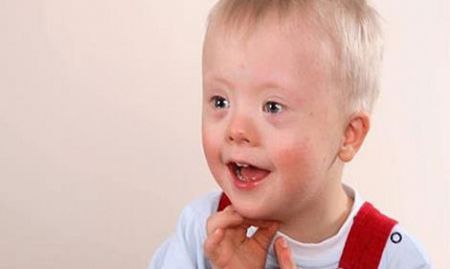Half of all babies aborted because they have Down's syndrome are missing from official records due to poor administration in clinics
Half of all babies aborted for Down’s Syndrome are missing from official figures due to chaotic record-keeping in abortion clinics, a government investigation has revealed.
Doctors have broken the law by failing to keep proper records for the Department of Health on the reason for termination.
Many Down’s terminations are being wrongly recorded as ‘social’ abortions – which make up the bulk of terminations in this country – but other records are simply missing.
The investigation, published on the Department of Health website, shows that in 2012 a total of 994 babies were aborted for Down’s Syndrome, according to the independent National Down’s Syndrome Cytogenetic Register.
However, Department of Health figures recorded just 496 of these – meaning that 498 cases were classed as missing.
The investigation identified 11 of these cases as late abortions, over 24 weeks, but in a further 107 cases the gestation of the baby was not known. In 47 cases, abortions for Down’s Syndrome were traced in the Department of Health figures, but other reasons had been given for the termination.
The NDSCR knows the correct figures because hospitals alert it every time a diagnosis of Down’s is made and it tracks cases to a birth or termination. Department of Health figures are compiled using abortion forms filled in by doctors.
The previous year’s data, for 2011, showed only 410 records on Down’s termination from the NDSCR could be matched by the Department of Health’s official records, when in fact 937 Down’s terminations took place.
As a growing number of women aged 40-plus become mothers, the number of Down’s Syndrome pregnancies is also increasing and better screening means the majority of cases are diagnosed before birth.
Under the Abortion Act, termination of a baby with Down’s Syndrome is legal right up to the point of delivery. Such terminations are hugely controversial because due to medical advances, children with Down’s can now expect to live until their fifties and sixties. Tory MP Fiona Bruce, chairman of the recent independent parliamentary inquiry into abortion for disability, said it was clear doctors had broken the law.
‘Worryingly, the department appears to have made no attempt to see that the law is properly enforced,’ she said.
‘We now know that nearly half of abortions for Down’s Syndrome were incorrectly recorded. How many doctors were referred for investigation? None.
‘Health ministers must act to restore public confidence in medical practitioners in this field.’
Professor Joan Morris, director of the NDSCR, said: ‘It has been very frustrating that people could pick up the official figures from the Department of Health, yet we all knew they were so inaccurate and there was no extra guidance to anyone to point them to the correct data.’
Under the Abortion Act a form must be completed by the doctor undertaking the termination and sent to the Chief Medical Officer within 14 days of the abortion.
Professor Morris said: ‘There is a form with a box to tick and there is no envelope provided. The doctor has to find the envelope and write the correct address on it. It is not a system designed to be easy in a busy clinical setting.’ Paul Danon, of the Pro-Life Alliance, said: ‘We oppose abortion on any grounds, but are particularly shocked by the discrepancies revealed in this Department of Health analysis.
‘It was horrifying to read that 11 Down’s Syndrome abortions post 24 weeks do not even appear in the official dataset.’
A Department of Health spokesman said: ‘Doctors have a legal duty to report all abortions, including those due to fetal anomalies, to the Chief Medical Officer.’
The spokesman added that the department was working with the Royal College of Obstetricians and Gynaecologists to tighten up the system.


